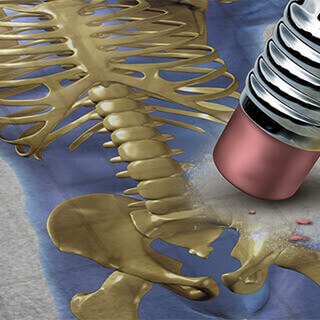Treating Bone Loss in Breast Cancer Survivors
 Adding another couple of pills to your daily dose may seem like a drag, but new research is finding that it could be beneficial deep down in your bones.
Adding another couple of pills to your daily dose may seem like a drag, but new research is finding that it could be beneficial deep down in your bones.
Many breast cancer patients also experience secondary causes of bone loss, such as vitamin D deficiency. But a Loyola University (Chicago) Health System study has found that bone loss can be lessened with a comprehensive regimen that includes both osteoporosis drugs and treatments that target secondary causes of bone loss.
Primary causes of osteoporosis are menopause and aging. Secondary causes are diseases or conditions that exacerbate bone loss.
A class of breast cancer drugs called aromatase inhibitors can decrease bone mineral density in postmenopausal women because they decrease the body's production of estrogen. While estrogen feeds cancer, the hormone also protects bones. In certain breast cancer patients, bone loss from cancer drugs can be treated with osteoporosis drugs called bisphosphonates, such as alendronate sodium (Fosamax®) and ibandronate sodium (Boniva®).
The research at Loyola's Osteoporosis and Metabolic Bone Disease Center treated a group of breast cancer patients who also had bone loss, some from secondary causes. Each patient was prescribed osteoporosis drugs. Women with secondary bone loss also received additional treatments. For example, vitamin D deficiency was treated with prescription doses of vitamin D supplements. After one year, all the patients had improved bone mineral density.
One of the best ways to prevent bone density loss in general is to begin a lifelong commitment to exercise and healthy nutrition while you are still young. Bone strength increases with regular exercise -- to help prevent bone loss, weight-bearing exercise such as walking, low-impact aerobics, or tennis work best. Adequate calcium intake is also essential for preventing osteoporosis. Good sources of calcium include dairy products, leafy green vegetables, nuts, and seafood.
To learn more click here:
September 24, 2009







